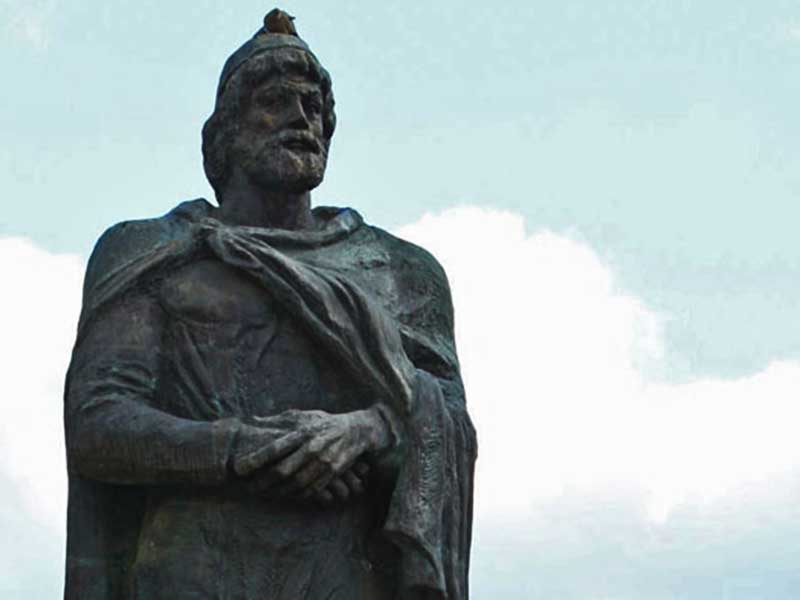Proud to introduce to you Burebista
BUREBISTA
Burebista was a significant figure in ancient history as the king of the Getae and Dacian tribes from 82/61 BC to 45/44 BC.
Here is an article about him and his role as the defender and unifier of the Dacians.
King
King of the Getae and Dacian tribes from 82/61 BC to 45/44 BC
Achievements
First king who successfully unified the tribes of the Dacian kingdom
Burebista
This king is widely considered to be the greatest king of Dacia
Burebista: The Defender and Unifier of the Dacians
Burebista was the first king to successfully unify the tribes of the Dacian kingdom, which encompassed the region between the Danube, Tisza, and Dniester rivers, comprising modern-day Romania and Moldova.
He played a crucial role in defending the borders of the Dacians and stopping the great Celtic/Gallic migration, which transformed the Dacian territories into a stronghold.
Unification of the Dacian Kingdom
Burebista's reign marked a significant period in Dacian history as he successfully united the various tribes under his rule.
The exact date of his ascension to power is debated among scholars, but his reign is generally believed to have begun around 82/61 BC.
His unification efforts brought together the Thracian peoples, including the Getae and the Dacians, who had inhabited the region since the 7th and 6th centuries BC.
His kingdom stretched from the Black Sea to the source of the river Tisa and from the Balkan Mountains to Bohemia.
Defense of the Dacian Borders
Burebista's reign was marked by his efforts to defend the borders of the Dacian kingdom. He successfully halted the great Celtic/Gallic migration, which posed a threat to the Dacians and their territories.
By defending the borders, the king ensured the safety and security of his people, establishing the Dacian kingdom as a formidable power in the region.
Legacy and Impact
Burebista's reign had a lasting impact on the Dacian kingdom and its subsequent history.
He transferred the capital of the Geto-Dacians from Argedava to Sarmizegetusa, solidifying his rule and centralizing power.
Under his leadership, the Dacian kingdom reached its maximum extent, extending south of the Danube into present-day Bulgaria.
Burebista's Dacian state was powerful enough to even threaten Rome, with Julius Caesar considering a campaign against the Dacians.
However, his reign came to an end with his death in 45/44 BC, leading to the subsequent division of Dacia until the reign of Scorilo.
Burebista summary
His role as the defender and unifier of the Dacians has left a lasting legacy in Romanian and Moldovan history.
His reign is a testament to the strength and resilience of the Dacian people, and his efforts to unify the tribes laid the foundation for a powerful kingdom that would shape the region's history for centuries to come.

Content created by:
Alex Costin
Results driven services:
Digital Marketing
Need my expertise?
Contact me
No tracking cookies!
General information purposes only!
Business partners offers (backlinks):
Search Engine Optimisation agency:
SEO
Explore this city secret guide:
Barcelona
Outdoor recreational activity:
Canyoning
Wide range of financial services:
Chartered Accountant
Copyright © 2023 Alex Costin